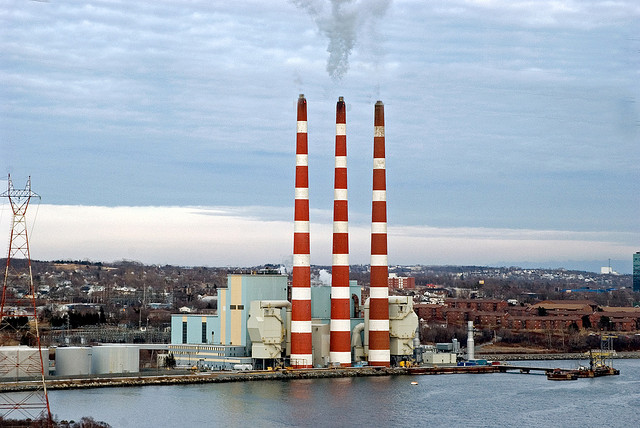rabble is expanding our Parliamentary Bureau and we need your help! Support us on Patreon today!
Having watched the electricity spectacle in Nova Scotia since the early 1970s, my expectations have taken a hit over time. Whereas I once naively believed that, surely, reason would prevail, recently I’ve been inclined to consider it progress if a government — any government — can serve its four years without leaving behind yet another white elephant or equivalent bung-up.
My hopes weren’t lifted when the Liberal party came to power mainly by blowing that old political noisemaker: power rates. You young people don’t know this, but in 1978 the Gerald Regan government fell because power rates were rising out of control (little to do with him; simply, we made electricity with oil, and oil prices were spiralling out of control), and since then politicians have been madly pushing the power rate freakout button whenever elections loom.
All that considered, I’m moderately impressed with the McNeil government’s new electricity plan, which proposes a three-year power rate stability program, various incentives for energy innovation, an openness to fast-evolving energy technologies, and a determination to learn, based on the next four years of trial and error, where the road should be leading into the indefinite future.
Especially noteworthy is that one of the two warping elements of our energy policy over time has been removed and the other one watered down.
The first was making “job creation” the main driver for energy policy — meaning that no rational policy could ever evolve without being knocked off stride by electorally driven and mostly illusory and short-term job-creation considerations.
Among others, the misbegotten “coal policy” of the 1980s was of that stripe. One consequence was the shoddy Westray mine and the explosion of 1992 that killed 26 men.
The idea was still alive recently when the former NDP government, panicked by threatened losses in forestry jobs, created a $200-million forest-eating biomass plant near Port Hawkesbury.
It is now becoming more problem than solution.
This approach warped not only energy policy but economic policy as well.
We wasted a generation in pursuit of crazy, mostly energy-related megaprojects that never panned out, while buying stable power through New Brunswick, mainly from Quebec, would have freed our addled minds to pursue more realistic economic goals.
The other warping element is indeed power-rate politics. And although they’re still on, they could be on their way out.
The plan to stabilize rates over the next three years does have its logic — unlike disastrous power rate freezes in the 1970s and ’80s (and keeping in mind that we’re still stuck with the high costs of the Maritime Link cable from Newfoundland).
But things have evolved. For one thing, Nova Scotia Power is meshing with New Brunswick Power into something that might soon become a de facto Maritime grid — something tried, with federal help, 35 years ago but defeated by small politics on the Nova Scotia side. This should lead to efficiencies.
The regulation of the privately owned NSP has also been fine-tuned, with accountability and performance standards.
Notably, fuel and non-fuel costs are in separate categories. NSP says it has been finding savings in its non-fuel costs with little increases in sight, while fuel prices — notably coal, which still accounts for the biggest part of our generation — are in a low range and show no signs of rising in a flat world economy.
It may be that the McNeil government has rigged it so that if there’s a rate-hike shock after three years, it will be after the next election. On the other hand, if there’s no significant shock, our political power-rate psychosis may be over.
There is a shortcoming in this plan: conservation.
It wrongly assumes that Efficiency Nova Scotia, now concentrating on the low-income sector (as it should), is doing the whole job.
It also has commendable plans to work on energy savings in apartments, a problem spot for efficiency programs. But insulation and low-power light bulbs are not enough.
Alternative technologies to replace both electricity and oil are needed. Natural gas is doing a bit of this in Halifax. So is the Solar City project to install hot water heating solar panels on 600 Halifax roofs. Heat pumps have helped up to a point.
The electricity plan will fund community pilot projects for electricity-producing solar panels — also good but still not enough.
That’s hi-tech solar. The potential for savings in both electricity and oil by low-tech solar — direct heating of homes and buildings when the sun is shining (with low-cost installations), or rolling out hot water heating beyond the Solar City program — is enormous.
If the government is as open to new ideas as it proclaims in this electricity plan, I invite it to get some heads together, including from the public, to explore the full potential of solar, which is rolling ahead in the world, but which is dreadfully lagging here despite the fact that we have companies manufacturing panels for the world.
Ralph Surette is a freelance journalist in Yarmouth County. This article was first published in the Chronicle Herald.
Photo: Property#1/flickr
rabble is expanding our Parliamentary Bureau and we need your help! Support us on Patreon today!



